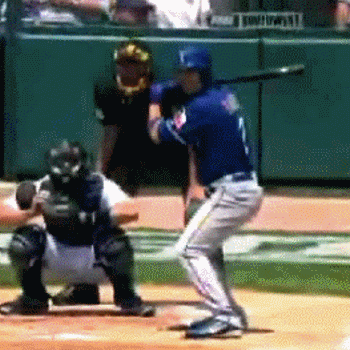| ChrisOLeary.com | |
| ChrisOLeary.com > BUY > Hitting > Experience Andres Torres | |
|
My relationship with Andres Torres was first discussed in a Sports Illustrated piece written by Joe LeMire in October 2010 in the middle of the Giants pennant and, ultimately, World Series winning run. Torres' favorite is Pujols. He is in such awe of Pujols' swing that he'll not only watch his at-bats but go online and use Google to find out more. In early 2008 he found some flipbooks breaking down the Cardinals first baseman's swing frame by frame and out of the blue called the website's creator, a St. Louis area suburban dad named Chris O'Leary who has read voraciously about hitting but has no professional background, and said, "Hey, I read your stuff. It really made a lot of sense. Tell me more about Connection." Similarly, in his book A Band of Misfits, Andrew Baggerly discussed my relationship with Andres Torres. But after the 2007 season, Torres remained stuck in Triple A, and he knew something had to change. With the help of Chris O'Leary, a private hitting coach, he began looking at all the video he could find on hitters he admired, starting with Albert Pujols. He saw the way they generated power by rotating through the pitch. Finally, Andres mentioned me in an interview after being traded to the Mets. I know about training, but hitting was difficult. And then in ’08... There’s a guy called Chris O’Leary (a St. Louis fan who kept online flipbooks breaking down Pujols’ swing). He’s online. He talks about Rotation. He's got video examples of Pujols, and I watched that. Our relationship was also discussed in a number of other pieces. My Experience with
|
|
|
Andres the Giant
By the end of January 2009, Andres was probably 90 percent of the way toward having The High-Level Swing. He figured the rest out during spring training. In particular, he stopped doing the big, Alfonso Soriano style leg kick that you see in the video clip above and instead changed to a simpler, quieter double tap like Chipper Jones or Carlos Beltran. As a result, Andres hit better than .400 in Spring Training and made the Giants' 2009 squad as a Non-Roster Invite.
During the 2009 season, Andres and I talked a few times and even met in person when the Giants were in St. Louis. However, based on the video I had seen of his swing earlier on during the season, I saw that his swing was where it needed to be. What's worse, I found that he only got himself thinking if he spent too much time thinking about his mechanics. As a result, my only mechanical suggestion to him was that he try to quiet down his hands a bit at set-up. In fact, and much to to my surprise, I found myself reverting to adages — that I used to think were worthless — like, "See the ball. Hit the ball," in an effort to help Andres keep from thinking too much at the plate.[5]
Get a Good Pitch to Hit
Andres and I talked just before Christmas 2009 when he was in between the winter ball seasons on Venezuela and Puerto Rico. I knew that Andres' swing and hitting mechanics were solid. As a result, my main message for him had to do with bat speed and selectivity.[6]
While some people preach bat speed as an end in and of itself, I don't think it's a coincidence that Albert Pujols' bat speed is only 87MPH (versus to 100+ MPH batspeed numbers that some major leaguers put up and that some people say you should strive for). Instead, I think Albert Pujols' only average bat speed is part of his secret to being able to hit for both power and average.
I mentioned to Andres that, in all my clips of Albert Pujols, I have very few clips of him swinging at bad pitches.[7] I also reminded Andres that getting a good pitch to hit (e.g. a mistake and/or a strike) was one of Ted Williams' key messages in his book The Science of Hitting.[8]
Looking for More Power
Andres and I talked in person a number of times in August 2010 when the Giants were in St. Louis.
At the time he was obviously hitting quite well, but wanted to get even better. In particular, he wanted to hit with more power. While he was happy to be at the top of the NL leader board for doubles, he wanted to see if he could convert some of those doubles into home runs and get to 30 home runs.
Not wanting to get him thinking, I limited our discussion to The Move and the importance of the back foot to the swing. I decided to leave other topics like Loading and the Running Start, which I think could benefit him, to the off-season because I knew that he could very well break his swing if he tried to do too much too soon.
As with everything in life, you have to strike a balance between constantly trying to get better and not breaking things that aren't broken (or at least working on them at the right time, which is the off-season).
2010 Postseason
Andres had a poor start to the 2010 postseason, getting only 2 hits in the NLDS against Atlanta.
Part of the problem was that he was still recovering from an appendectomy and had lost the feel for his swing during his time off. However, a bigger part of the problem was that he was pressing and had gotten too focused on trying to hit home runs. That in turn led him to get pull crazy and become less disciplined than normal. In particular, he started trying to pull outside pitches. That is a big no-no because it is virtually impossible to do consistently.
Things only got worse during the start of the NLCS.
The Phillies saw what was going on and pitched Andres almost exclusively away, away, away. As a result, he looked terrible during the first two games of the NLCS. After Game 2 of the NLCS, it was obvious what the Phillies' strategy was, and what Andres' problem was, so I sent him a text message telling him that he had to figure out a better way of dealing with the outside pitch. I'm sure I wasn't the only person to see this or mention this, and Andres made the adjustment that he needed to make; he stopped chasing outside pitches.
The result was that Andres started drawing walks again. That in turn forced the Phillies to start throwing him strikes and he was able to get some good pitches to hit, which he did. As a result, he started to get hot in Game 4 of the NLCS and finished the NLCS tied for the team lead in batting average.
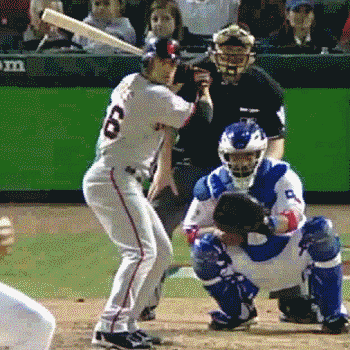
Andres Torres
Home Run to Right Field
Game 3
2010 World Series
Andres continued his resurgence during the 2010 World Series, hitting four doubles and a home run and putting up an AVG of .318 and an OPS of .984.
2011 Struggles
Andres struggled during the 2011 season.
There are many reasons for Andres' struggles, including the off-season distractions that come with winning the World Series and that got him out of his routine. However, he also struggled due to a mechanical problem that he developed as a result of his trying to hit more home runs.
Instead of just letting home runs happen, and in an effort to earn a bigger contract, Andres changed his leg lift. He stopped doing the small double tap that worked so well for him in the past and that he used in this clip to absolutely destroy a ball...
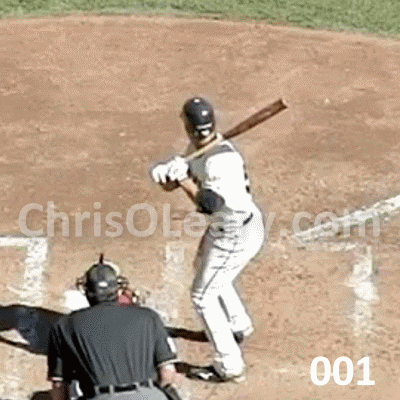
Andres Torres
Home Run to Right Field
October 2009
...or the small leg lift that helped him hit a home run to right field during the 2010 World Series...

Andres Torres
Home Run to Right Field
Game 3
2010 World Series
...and went back to the Alfonso Soriano style, big leg kick that he has played with off and on over the years.
While this big leg kick did work to a degree, it created a problem with the stability of his back leg and his back foot. In the clip below, notice how, as Andres reaches the top of his leg lift, his weight shifts onto the heel of his back foot.
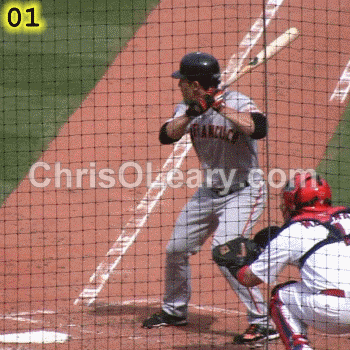
Andres Torres
Grand Slam Home Run to Right Field
June 2011
As a result, when his hips fire his back foot moves around much more than you see in a good swing. That reduced the efficiency of his swing — the home run above just squeaked over the wall in right field — and forced him to swing harder. That in turn reduced his consistency and killed his batting average.
Hopes for 2012
Andres called me in late December 2012 and flew me out to Arizona so that we could work on his swing. Coming out of those hitting sessions, I was hopeful that Andres would have at least a bounce-back year, if not an extremely good year.
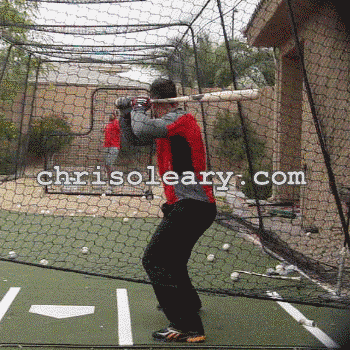
Andres Torres
January 27, 2012
Andres' swing was back to his 2010 form. His back foot was much more stable, he was back to striding and loading like he did in 2010, and he made an adjustment to his posture that promised to help him draw more walks and improve his ability to hit balls down and away.
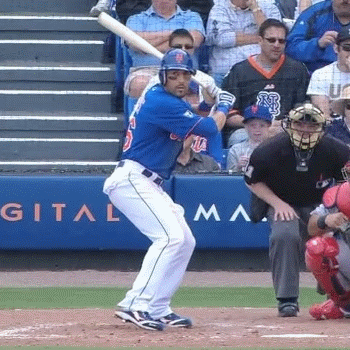
Andres Torres
March 6, 2012
As it turned out, 2012 was a better, but still mixed, year for Andres. While he had his moments early on in the year, he also struggled with some injury problems. That made it hard for him to get into a rhythm. He was also affected by his ADHD and, in particular, a tendency to continually tinker with his swing instead of just sticking with his swing. As a result, he had a problem tinkering his way out of his good mechanics.
Andres did finish 2012 strong, due in large part to his dumping the mechanical adjustments that had been suggested to him and gong back to the 2010 swing that he was so successful with.
Andres Torres' Hitting Mechanics
I discuss the exact mechanical improvements that Andres made to his swing in my piece on Andres Torres' Swing.
Other Players
Andres Torres isn't the only professional baseball player that I have worked with.
At last count, I have one other client in the major leagues, three clients at AAA, two clients at AA, several more clients in the lower levels of the affiliated minor leagues, and three clients playing for independent minor league teams and trying to get back on the road to the major leagues. I have also worked with a number of D-1 college baseball and fast pitch softball players.
I don't give out the names of these players because I don't want to get them in trouble with their coaches. While they, and I, believe in what I teach, most of the time it contradicts what their coaches are saying, so they have to keep it to themselves and we have to work on the down low.
If you are a minor leaguer and are looking for help, e-mail me and we can talk about how you can get access to my client-only web site now and pay me later.
Notes
[1] It's kind of pathetic, but one of my would-be competitors tried to damage my relationship with Andres by telling him and others that I was trying to take complete credit for his success ("So Chris O'Leary is going around telling people that he taught you everything you know. What do you think about that?").
He even went so far as to send Andres a letter, which Andres described to me in 2012 as "crazy" and "scary."
I certainly don't take sole credit for Andres' swing. Among other people, Carney Lansford calmed down Andres' stride in 2009.
What I did was help Andres understand...
- What a good swing actually looks like.
- How and why what he was taught was wrong.
- How his swing differed from Albert Pujols' swing.
Andres then made it happen.
[2] Andres talked about this in a piece on nj.com.
[3] Based on how Andres was able to turn his career around after (finally) learning what good hitters actually do, you have to wonder if poor hitting instruction has something to do with the phenomenon of the AAAA player.
[4] I knew that Andres actually was moving his swing in the right direction with the Cubs when he went down with an injury to one of his obliques. That was a conditioning and fitness problem that indicated that he was starting to get more power from his core, but that his core wasn't properly conditioned. It made me aware of the need to make sure that people conditioned their cores as they moved to a rotational hitting based swing.
[5] I wasn't at all surprised when I heard that Hensley Meulens and Bruce Bochy of the Giants had banned Andres and a few other Giants from taking extra BP before games because they were concerned that they were getting obsessive about it. I also wasn't surprised when Andres' batting average experienced a significant upward surge (I believe as a result).
[6] You can see some good evidence that he took this lesson to heart on Andres Torres' Fangraphs page. His O-Swing%, which is the percent of the time that he swings at pitches outside of the strike zone, is 24.1%. That is down 5 points, or 20 percent, from the 29.0% number he posted in 2009. Similarly, Andres' Z-Swing% is up and his Swing% is down, two more things that suggest greater selectivity. Andres does indeed seem to be doing a better job of getting a good pitch to hit.
[7] I also mentioned to Andres that, in all of my clips of Pablo Sandoval, I don't have a single clip of Sandoval where he's hitting a strike. Sandoval's willingness to chase pitches out of the strike zone may have something to do with his fall off this year. In fact, if you look at Pablo Sandoval's Fangraphs page, you can see a deterioration in his selectivity numbers. His O-Swing% is up and his Z-Swing% is down significantly.
[8] On one of the days when the Giants were in town, Andres and I were talking hitting when he called Pablo Sandoval over. The three of us then started talking about Albert Pujols' swing and how it's consistent with what Ted Williams talks about in his book The Science of Hitting. What was funny about the conversation was that Sandoval doesn't speak much English and I speak about 10 words of Spanish, but all of us had read Ted Williams' book multiple times and knew all the diagrams in it by heart. With lots of hand-waving and some translating by Andres, the three of us had a half hour conversation about the book and how much good stuff there is in it.

